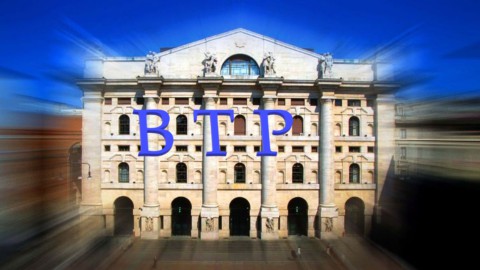The Btp family is expanding. This morning he made his debut on short-term BTPs, baptized in Shakespeare's language to immediately attract the attention of international operators. The bond, maturing on 29 November 2022 and offered for 4 billion euro (all allotted) recorded a yield of -0,39%, down on the -0,308% of the February placement of the Ctz on 28 September 2022.
That's how it emerges right away the main novelty of the title: duration. the Btp Short Term, can have a maturity between 18 and 30 months, more flexible than the old Ctz, suspended as of today's auction. From now on, the "short" BTPs, as well as their reopenings, will always be offered together with the BTPEIs on the first day of the month-end auction cycle. The main reason for the change lies in the objective of diversifying the audience of investors on the short end of the curve, involving foreign operators.
The second novelty, in fact, is the presence of a coupon (initially equal to zero) as is already the case with the other BTPs, according to a line already known to international investors - with the aim of greater flexibility and lower costs compared to the Ctz, an instrument essentially reserved for Italian customers who thus retirement after almost thirty years of supply, thus following the fate of other products baked in the past by the Treasury laboratory. Before the Ctz, in fact, other bonds suffered the same fate, often after a not particularly long period of presence in the offer booklet of the Italian Treasury: the Cts (Treasury certificates at a discount), the Ctos (Treasury certificates with Option) , or the Ctr (Royal Treasury Certificates).
Compared to their ancestors, the Ctz that sprung up in the 15s have had a longer and more fortunate life. Originally, in fact, the Ctz responded to the need to entice the public to invest in longer maturities than the Bots which in the 20s, when yields fluctuated between XNUMX and XNUMX per cent, practically had no alternative under the pressure of galloping inflation. In short, it was at that moment that the Bot people took shape, the domestic army of savings that saved the Republic from bankruptcy. But when inflation and rates began to decrease, the problem arose of convincing savers, attached to their ingrained habits and fears, to lengthen the maturities of investments with respect to Bots, very short-term securities. The Treasury then began to propose some experiments to try to entice them towards longer maturities, with the aim of lengthening the maturity of a debt which was extremely low.
Of the various experiments, the Ctz was probably the most successful. First, because the mechanism was well known to savers. A zero coupon certificate it is a discount title, i.e. a Bot. For the saver, it was a matter of taking a first small step, ie moving from the 12-month investment in BOTs to the two-year investment in a CTZ. The experiment was quite successful, which convinced the Treasury to keep the Ctz among the instruments offered for a long time. But for some time now, the title has been suffering from the aches and pains of time little interest from foreign investors which resulted in high higher costs for the issuer and low liquidity of the instrument. This is how the short term Btp was born, which is nothing but a Btp, fixed-rate instrument with a semi-annual coupon, like its brothers which have a longer duration. Its peculiarity lies in the fact that the Treasury has not announced, as in other cases, a fixed deadline, but its own duration is between 18 and 30 months, with a decision that will be taken from time to time by the issuer.
Why the novelty? The reason lies in advantage guaranteed by flexibility to orientate the maturities of the securities on those dates which offer a lower degree of concentration. Maturity concentration goes hand in hand with refinancing risk. The higher the concentration, the higher the risk of a significant cost impact in the event of difficult market conditions. The short term Btp will therefore represent one more weapon for the Treasury together with exchanges and the possibility of repurchasing the securities on the secondary. Plus this title fills a gap in supply compared to France and Germany which have two-year bonds, while the shortest-term BTP was the three-year one. Adding a proposal around two years makes it possible to obtain additional indirect liquidity from all those who take positions on government bonds of different countries on this maturity. Similarly, the short-term Btp will benefit, in terms of liquidity, from the presence of a future on the short-term BTP listed on the Eurex market, for the benefit of professional investors. And of course, the issuer.





